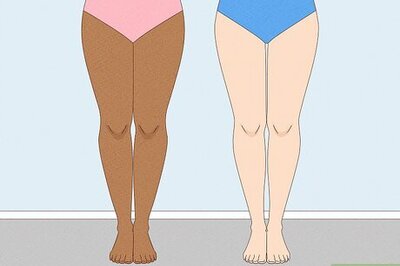
views
Menstrual pain, or dysmenorrhea, can be a debilitating experience for many women. While over-the-counter pain medications can be effective, some prefer natural remedies to alleviate discomfort. Here are the top five natural remedies for menstrual pain relief:
Heat Therapy
Applying heat to the lower abdomen is a well-known remedy for easing menstrual cramps. Heat helps to relax the muscles of the uterus, which can reduce the severity of cramps.
- Hot Water Bottle or Heating Pad:Place a hot water bottle or heating pad on your lower abdomen for 15-20 minutes. Ensure the temperature is comfortable to avoid burns.
- Warm Bath:Taking a warm bath can also provide relief. Adding a few drops of essential oils like lavender or chamomile can enhance relaxation.
- Warm Compress:If you don’t have a heating pad, a warm compress can be made by soaking a towel in hot water, wringing it out, and placing it on your abdomen.
Studies have shown that heat therapy can be as effective as ibuprofen in reducing menstrual pain.
Herbal Teas
Certain herbal teas have properties that can help reduce menstrual pain. They work by promoting relaxation, reducing inflammation, and providing a soothing effect.
- Chamomile Tea:Chamomile is known for its anti-inflammatory and antispasmodic properties, which can help relax the uterus and decrease cramping.
- Ginger Tea:Ginger has anti-inflammatory properties and can reduce the production of prostaglandins, which are responsible for causing menstrual cramps.
- Peppermint Tea:Peppermint has muscle relaxant properties that can help ease the pain and reduce the severity of cramps.
Drinking 1-2 cups of these herbal teas daily during your menstrual period can provide significant relief from pain.
Regular Exercise
While it might be the last thing you feel like doing, regular exercise can actually help reduce menstrual pain. Physical activity increases blood circulation and releases endorphins, which are natural painkillers.
- Aerobic Exercises:Activities such as walking, running, or swimming can improve circulation and reduce cramps.
- Yoga:Specific yoga poses, such as the child’s pose, cat-cow stretch, and reclining twist, can stretch and relax muscles, easing menstrual pain.Exercising regularly, not just during your period, can help maintain a healthier menstrual cycle and reduce the intensity of cramps.
Dietary Adjustments
What you eat can have a significant impact on your menstrual pain. Certain foods can help reduce inflammation and promote overall health.
- Omega-3 Fatty Acids:Omega-3s, found in fish like salmon and mackerel, as well as flaxseeds and walnuts, omega-3s have anti-inflammatory properties that can reduce menstrual pain.
- Magnesium-Rich Foods:Foods like leafy green vegetables, nuts, seeds, and whole grains can help relax muscles and reduce cramps.
- Avoid Caffeine and sugar.Reducing your intake of caffeine and sugar can help manage bloating and discomfort associated with menstruation.
A balanced diet rich in anti-inflammatory foods can significantly alleviate menstrual pain.
Acupuncture and Acupressure
Acupuncture and acupressure are traditional Chinese medicine techniques that have been used for centuries to manage pain, including menstrual cramps.
- Acupuncture:Involves inserting thin needles into specific points on the body to balance energy flow and reduce pain. Studies suggest that acupuncture can significantly reduce the intensity of menstrual cramps.
- Acupressure:Similar to acupuncture but without needles. You can apply pressure to specific points on the body, such as the space between your thumb and index finger, to relieve pain.
Both techniques can help improve blood flow and reduce muscle tension, offering relief from menstrual pain. Incorporating these natural remedies into your routine can provide significant relief from menstrual pain and improve your overall well-being. However, it’s always advisable to consult with a healthcare professional before trying new treatments, especially if you have any underlying health conditions.
Inputs by Dr. Tejal Kanwar, Gynaecologist & Consultant at Ujaas (A menstrual health and hygiene management social enterprise)



















Comments
0 comment